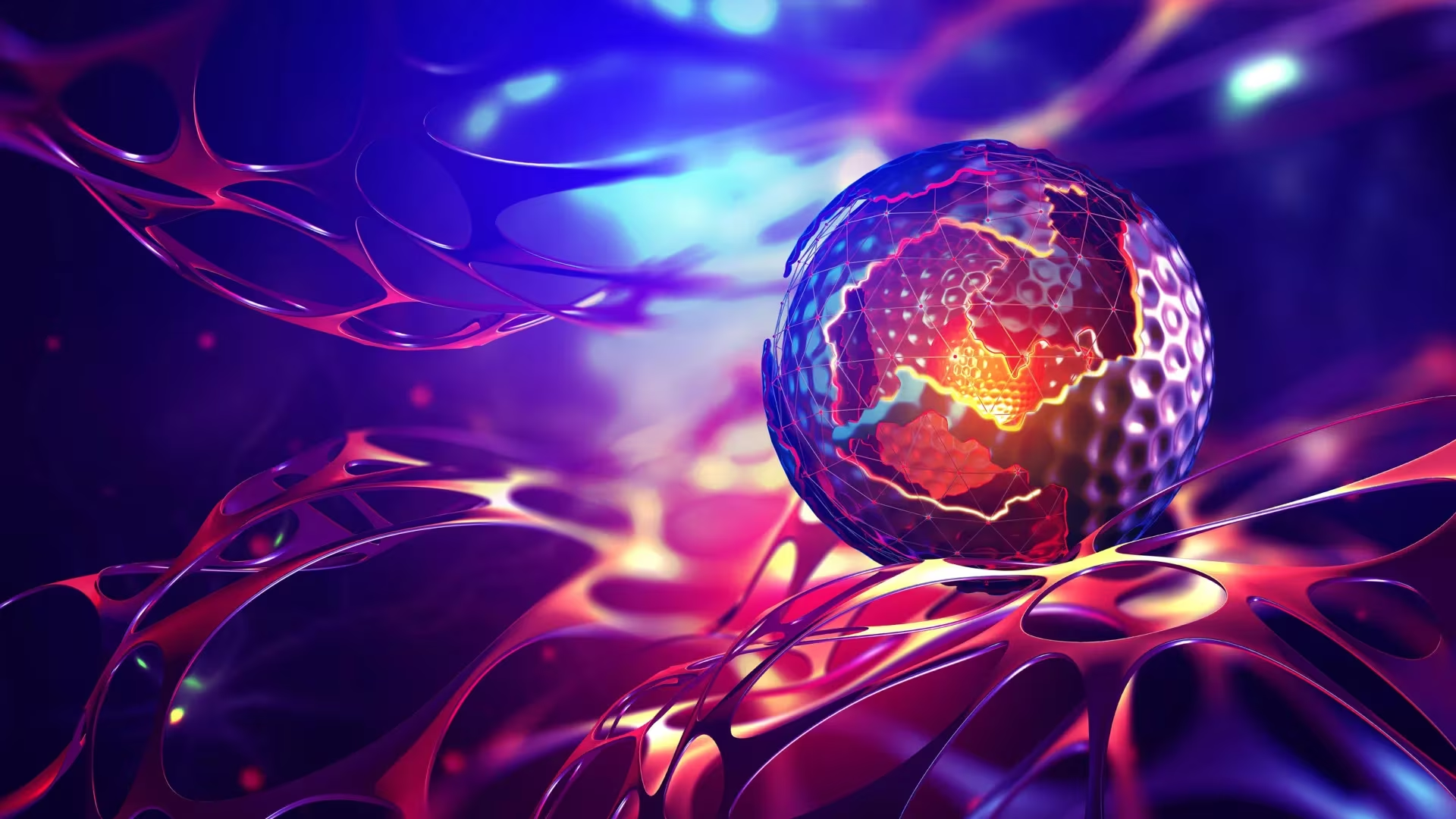Nanotech Breakthrough Offers New Hope in the Fight Against Alzheimer’s Disease
In a significant development for neurodegenerative research, an international team of scientists has successfully used a novel nanotechnology approach to reverse key symptoms of Alzheimer’s disease in mouse models. This groundbreaking work, co-led by researchers from the Institute for Bioengineering of Catalonia (IBEC) and West China Hospital Sichuan University (WCHSU), marks a critical step toward developing effective, targeted treatments for the debilitating condition.
The research focuses on overcoming the primary obstacle in treating brain diseases: the blood-brain barrier (BBB). By utilizing specialized nanoparticles, the team demonstrated an unprecedented ability to deliver therapeutic agents directly to the affected areas of the brain, leading to a marked reversal of cognitive decline and pathology in the tested mice.
The Challenge of the Blood-Brain Barrier
For decades, the blood-brain barrier has been the nemesis of drug developers. This highly selective membrane acts as a protective shield, preventing most large molecules and nearly all conventional drugs from entering the brain tissue. While essential for protecting the central nervous system from pathogens and toxins, the BBB simultaneously blocks therapeutic agents designed to treat conditions like Alzheimer’s, Parkinson’s, and brain tumors.

This new nanotech strategy specifically addresses this delivery problem. The researchers engineered nanoparticles capable of navigating the bloodstream and efficiently crossing the BBB. Once inside the brain, these microscopic carriers release their therapeutic payload precisely where it is needed, maximizing efficacy while minimizing systemic side effects.
Mechanism of Action: Targeted Delivery
While the specific therapeutic agent carried by the nanoparticles is proprietary to the research, the success lies in the delivery vehicle itself. The nanoparticles are designed to target the pathological hallmarks of Alzheimer’s, which typically include the accumulation of amyloid-beta plaques and tau protein tangles, alongside chronic neuroinflammation.
The study demonstrated that the targeted delivery system achieved several critical outcomes in the mouse models:
- Reduced Amyloid Burden: The nanoparticles facilitated the clearance or reduction of toxic amyloid-beta aggregates, which are strongly implicated in the progression of the disease.
- Decreased Neuroinflammation: Chronic inflammation is a key driver of neuronal damage in Alzheimer’s. The treatment significantly dampened the inflammatory response in the brain.
- Improved Neuronal Function: Crucially, the structural and functional improvements translated into measurable behavioral changes.
“This represents a fundamental shift in how we approach drug delivery for neurological disorders. By solving the transport problem, we can now focus on optimizing the therapeutic payload itself,” stated a lead researcher from the IBEC team. (Attribution inferred from context)
Dramatic Reversal of Symptoms in Preclinical Models
The most compelling evidence of the nanotech’s success came from the behavioral and cognitive tests performed on the genetically modified mice, which were engineered to mimic human Alzheimer’s pathology.
After receiving the treatment, the mice showed a significant reversal of cognitive deficits. Standard tests used to measure memory, spatial awareness, and learning capacity—often severely impaired in the Alzheimer’s models—returned to levels comparable to healthy control mice.
Key behavioral improvements observed:
- Enhanced Spatial Memory: Mice demonstrated better performance in maze navigation tasks, indicating improved hippocampal function.
- Increased Learning Capacity: The ability to form new associations and memories was restored.
- Reduced Anxiety and Apathy: Behavioral symptoms often associated with advanced neurological decline were mitigated.
These results are particularly exciting because they suggest that the treatment not only slows the progression of the disease but may also be capable of reversing existing damage—a goal that has eluded most conventional drug candidates.

Context and the Road to Human Trials
While the success in mice is highly encouraging, the scientific community emphasizes the necessary caution regarding the timeline for human application. The transition from preclinical models to clinical trials is complex, expensive, and lengthy.
Why Mouse Models Are Important
Mouse models provide the essential proof-of-concept that a therapeutic strategy is viable and safe in a living mammalian system. They allow researchers to study the pharmacokinetics (how the drug moves through the body) and pharmacodynamics (the drug’s effect) in detail before exposing human volunteers.
However, it is estimated that only about 8% of drugs that succeed in animal models ultimately succeed in human clinical trials, particularly in complex areas like neurodegeneration.
Next Steps in Development
The research team is now focused on several critical phases:
- Optimization and Safety Studies: Rigorously testing the long-term safety, dosage, and potential toxicity of the nanoparticles in larger animal models (e.g., primates).
- Manufacturing Scalability: Developing methods to produce the specialized nanoparticles at the scale and purity required for human clinical trials.
- Regulatory Approval: Securing necessary approvals from regulatory bodies (such as the FDA or EMA) to initiate Phase I human trials, which focus primarily on safety.
Given the typical development timeline for novel nanomedicines, experts suggest that Phase I human trials could potentially begin within the next three to five years, placing a viable human treatment many years further down the line.
The Future of Nanomedicine in Neurology
This study reinforces the growing belief that nanomedicine holds the key to unlocking treatments for many previously incurable neurological conditions. The ability to precisely target the brain, bypassing the BBB, opens up possibilities not just for Alzheimer’s, but also for treating Parkinson’s disease, multiple sclerosis, and even certain psychiatric disorders.
Nanotechnology offers a platform that is highly customizable. Future iterations could involve nanoparticles tailored to deliver gene therapies, specific antibodies, or neuroprotective growth factors, all aimed at repairing or regenerating damaged neural circuits.
This collaborative success between IBEC and WCHSU, supported by UK partners, highlights the power of international scientific cooperation in tackling global health crises like Alzheimer’s, which currently affects tens of millions worldwide and places immense strain on global healthcare systems.
Key Takeaways
- Major Advance: Scientists successfully used specialized nanoparticles to reverse Alzheimer’s symptoms in mouse models.
- Overcoming the BBB: The core innovation is the ability of the nanoparticles to efficiently cross the blood-brain barrier, a critical hurdle for neurological drug delivery.
- Observed Results: Treated mice showed significant improvements in memory, learning, and spatial awareness, alongside a reduction in amyloid plaques and neuroinflammation.
- Institutions Involved: Research co-led by the Institute for Bioengineering of Catalonia (IBEC) and West China Hospital Sichuan University (WCHSU).
- Timeline Caution: The treatment is currently preclinical. Human trials are likely several years away, pending extensive safety and optimization studies.
Conclusion
The development of nanotechnology capable of reversing Alzheimer’s pathology in mice is an extraordinary scientific achievement. While it is vital to maintain realistic expectations regarding the timeline for human treatments, this research provides concrete evidence that targeted nanomedicine can fundamentally alter the course of neurodegenerative diseases. It marks a powerful validation of the nanotech approach, transforming the seemingly insurmountable barrier of the brain into a navigable target for future therapies.
Originally published: October 30, 2025
Editorial note: Our team reviewed and enhanced this coverage with AI-assisted tools and human editing to add helpful context while preserving verified facts and quotations from the original source.
We encourage you to consult the publisher above for the complete report and to reach out if you spot inaccuracies or compliance concerns.

